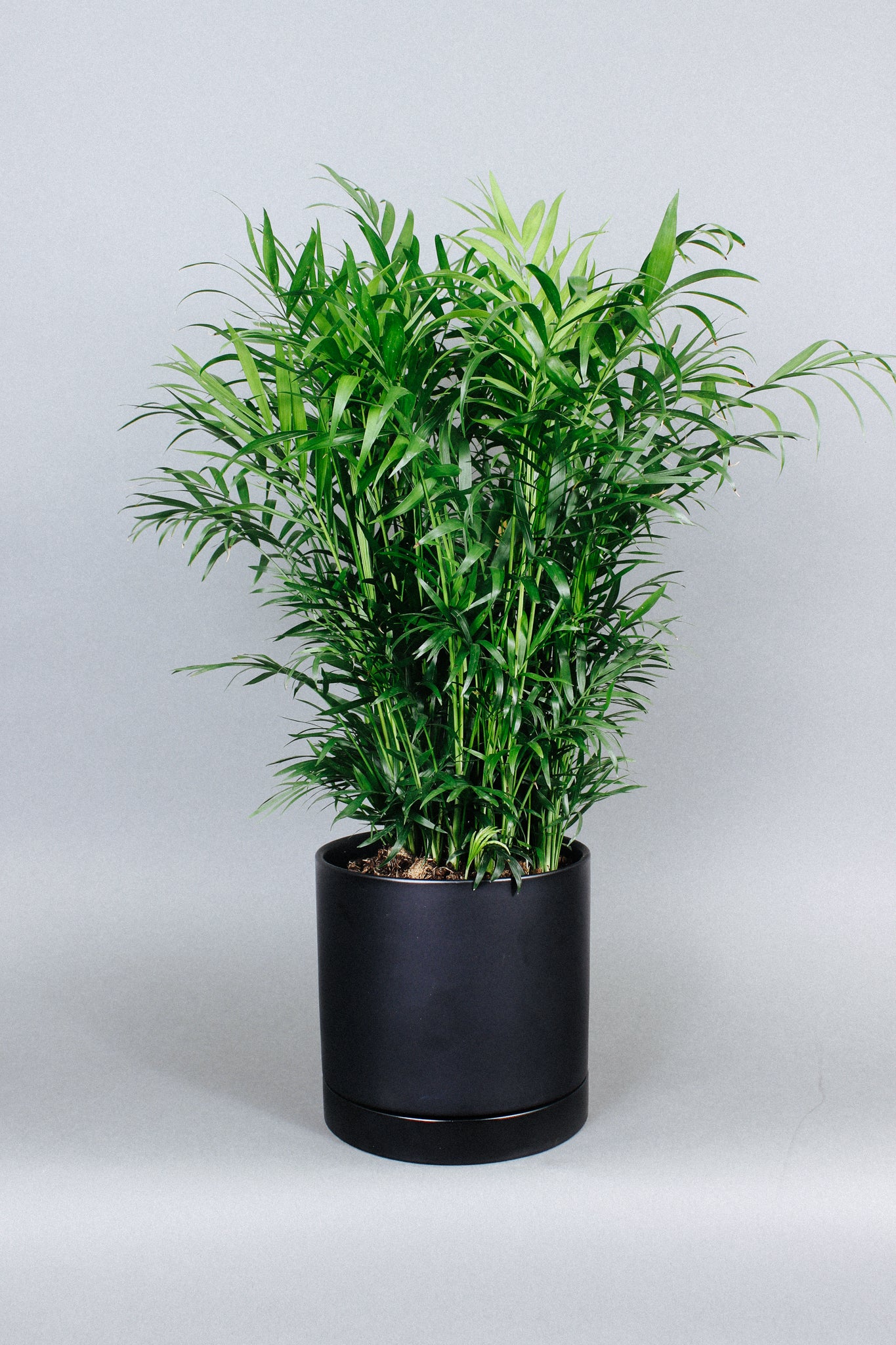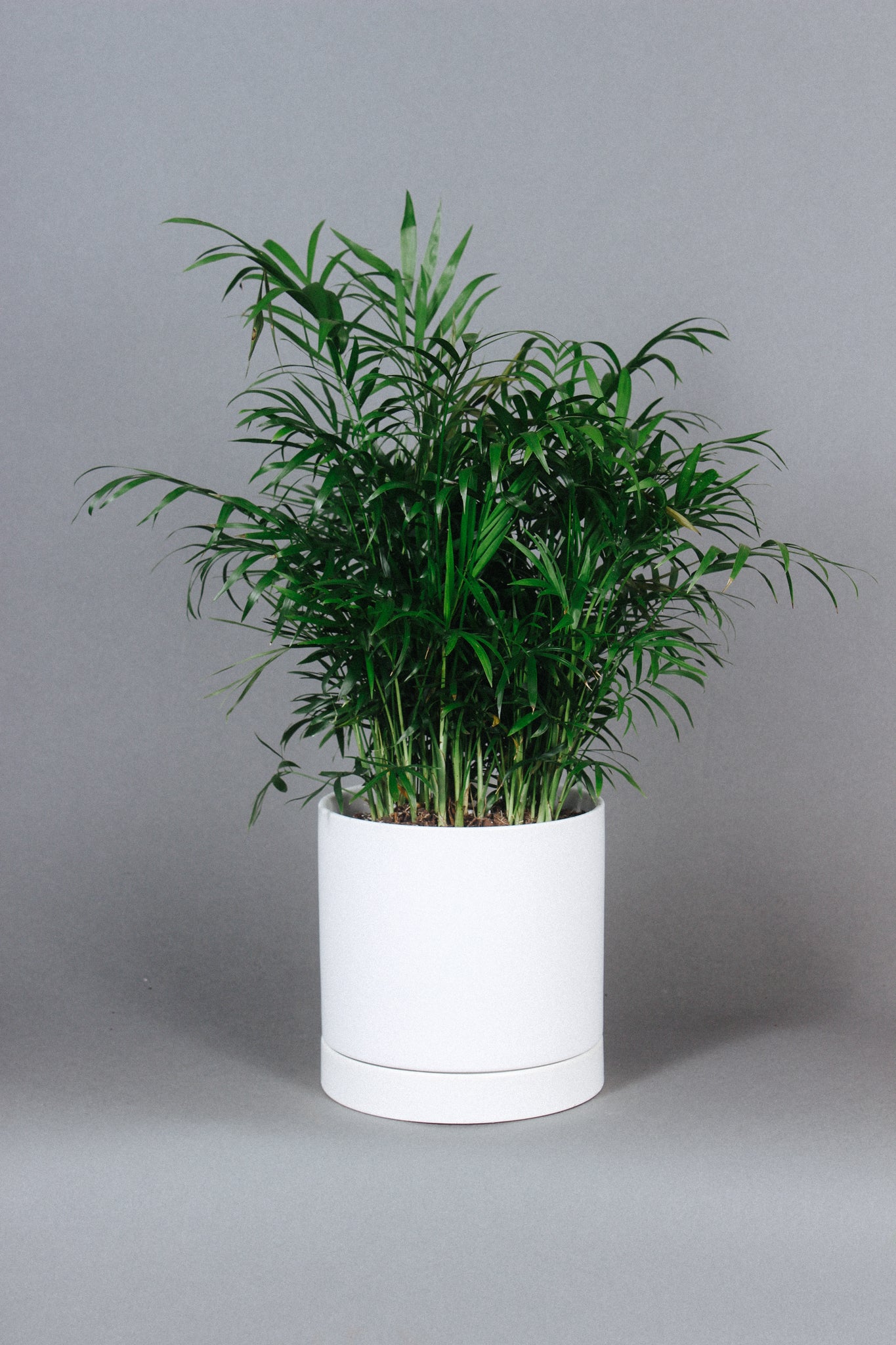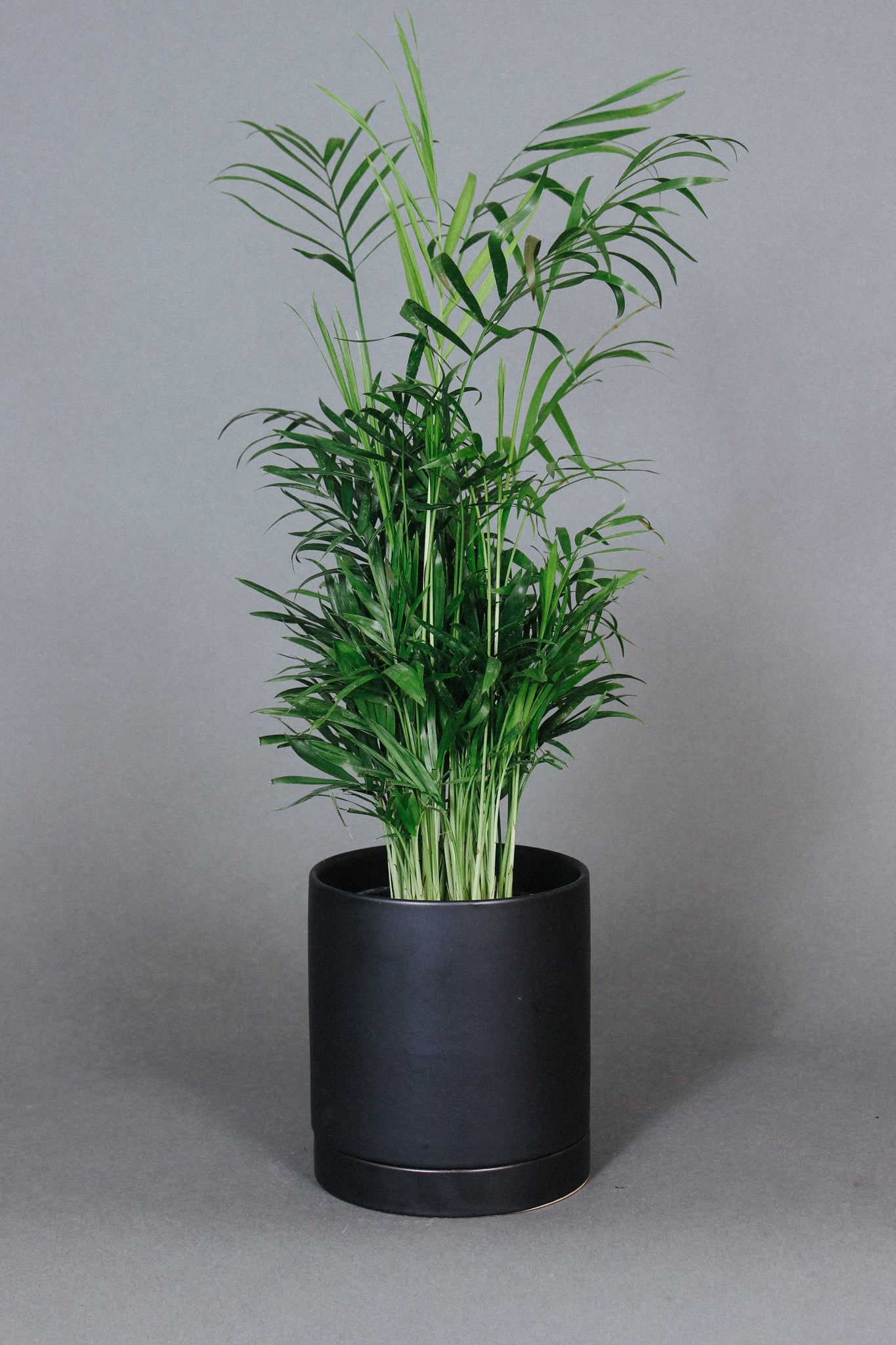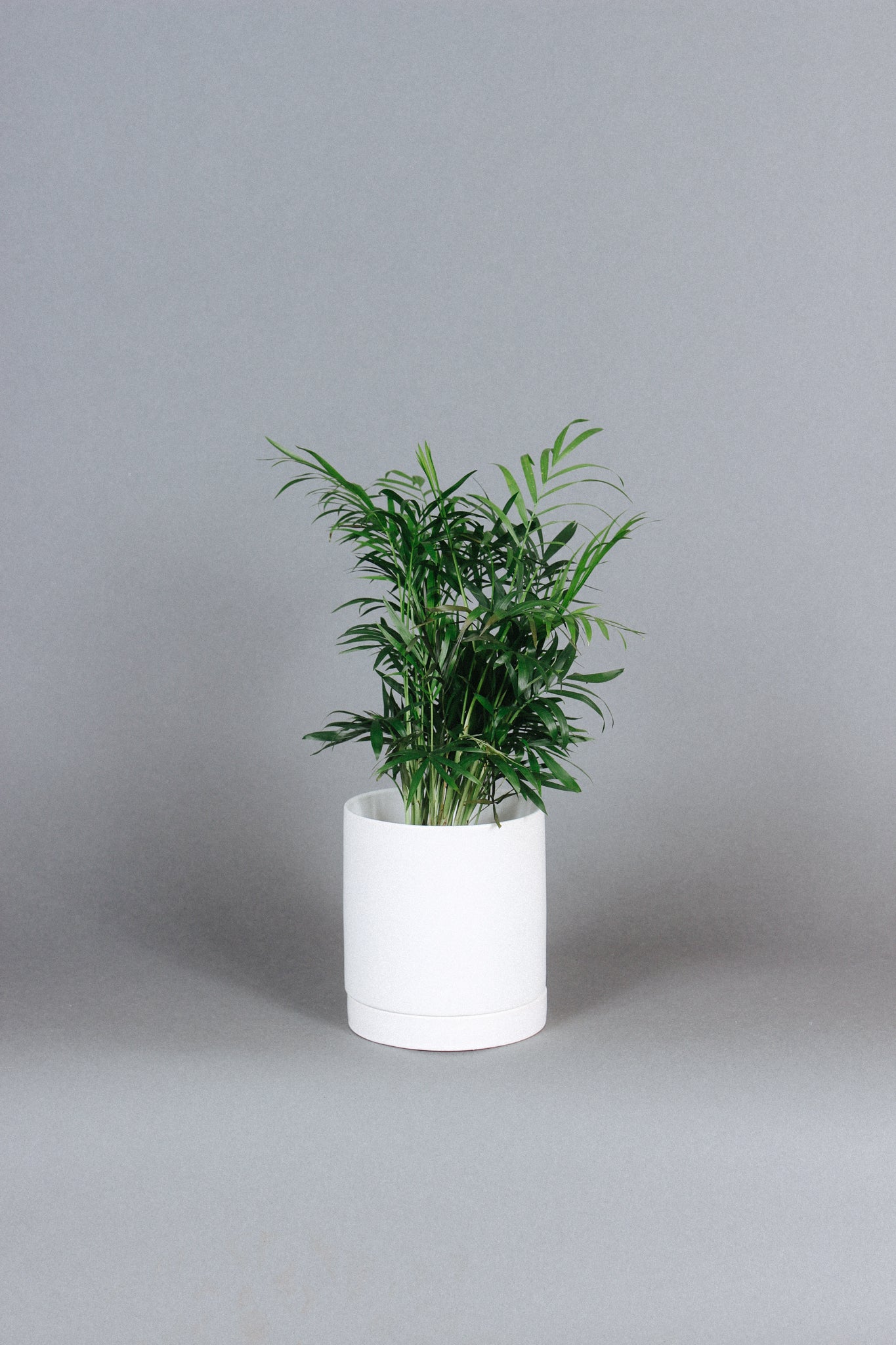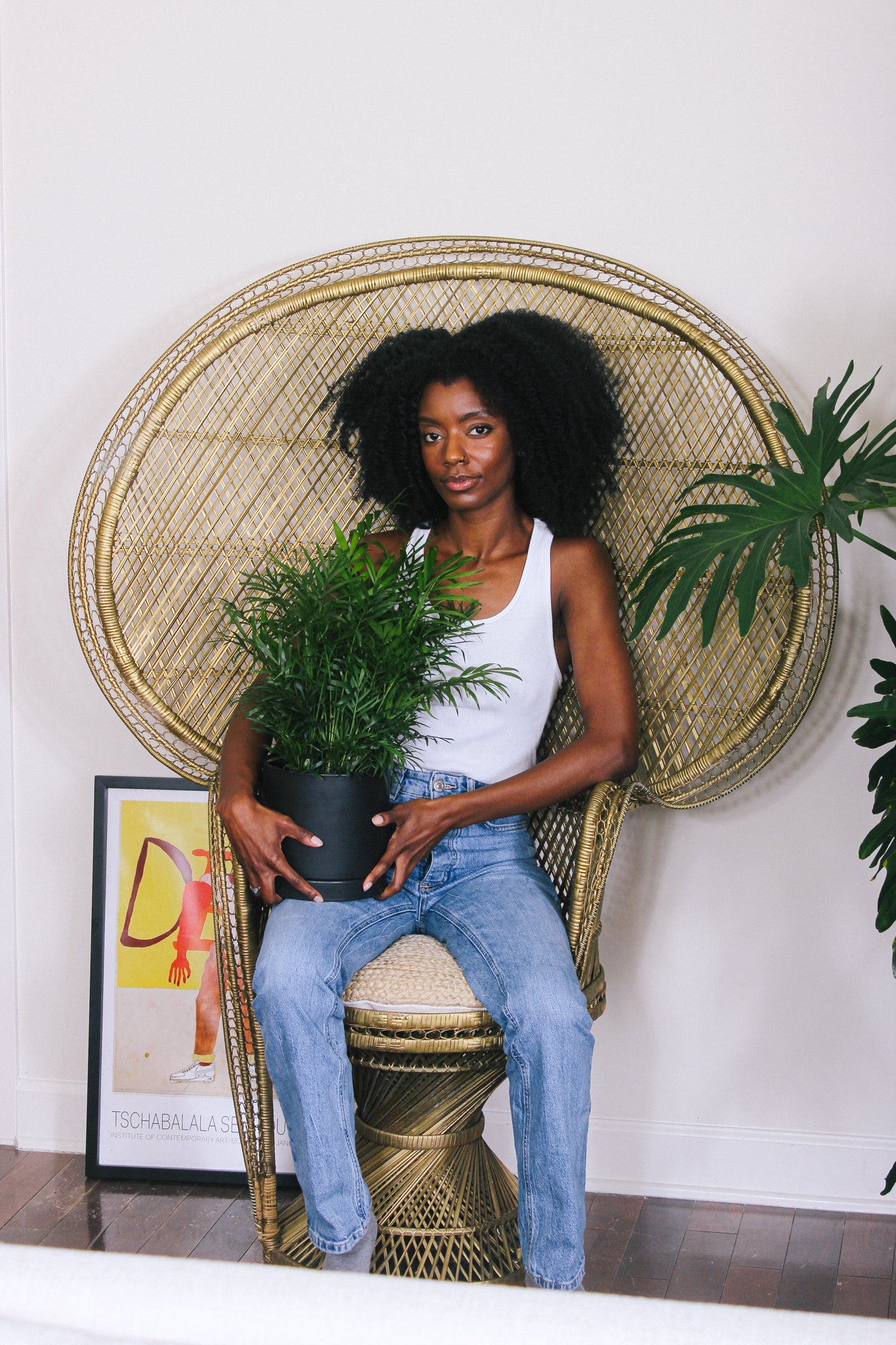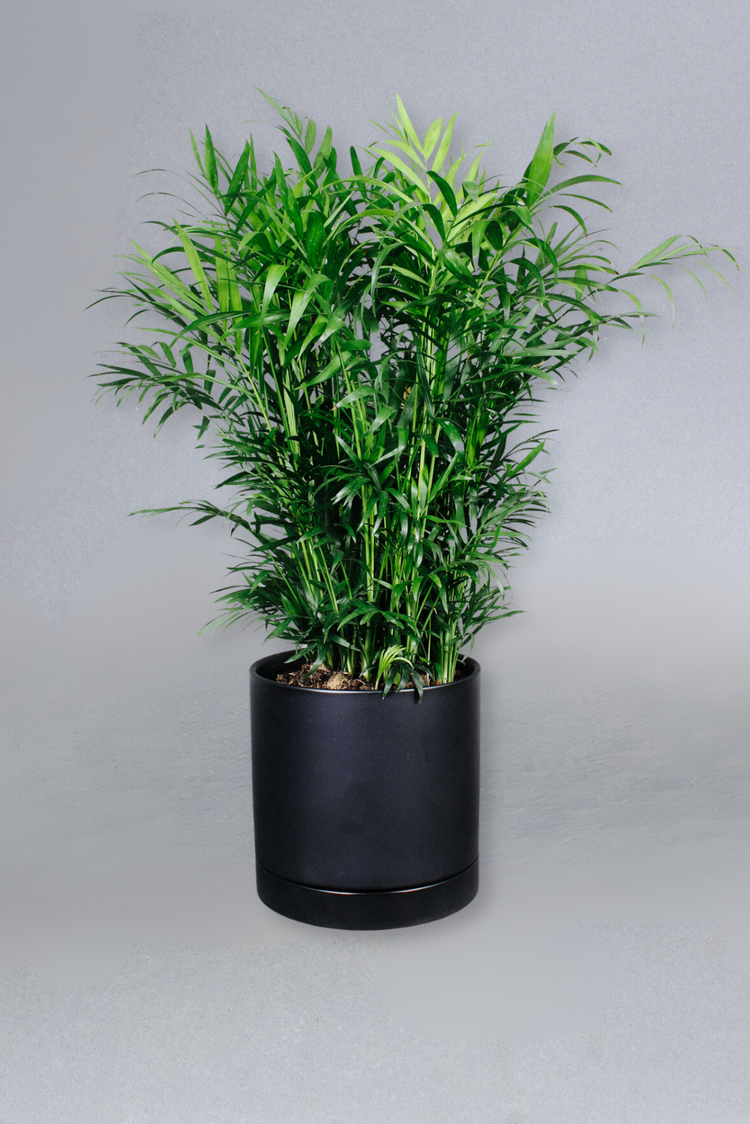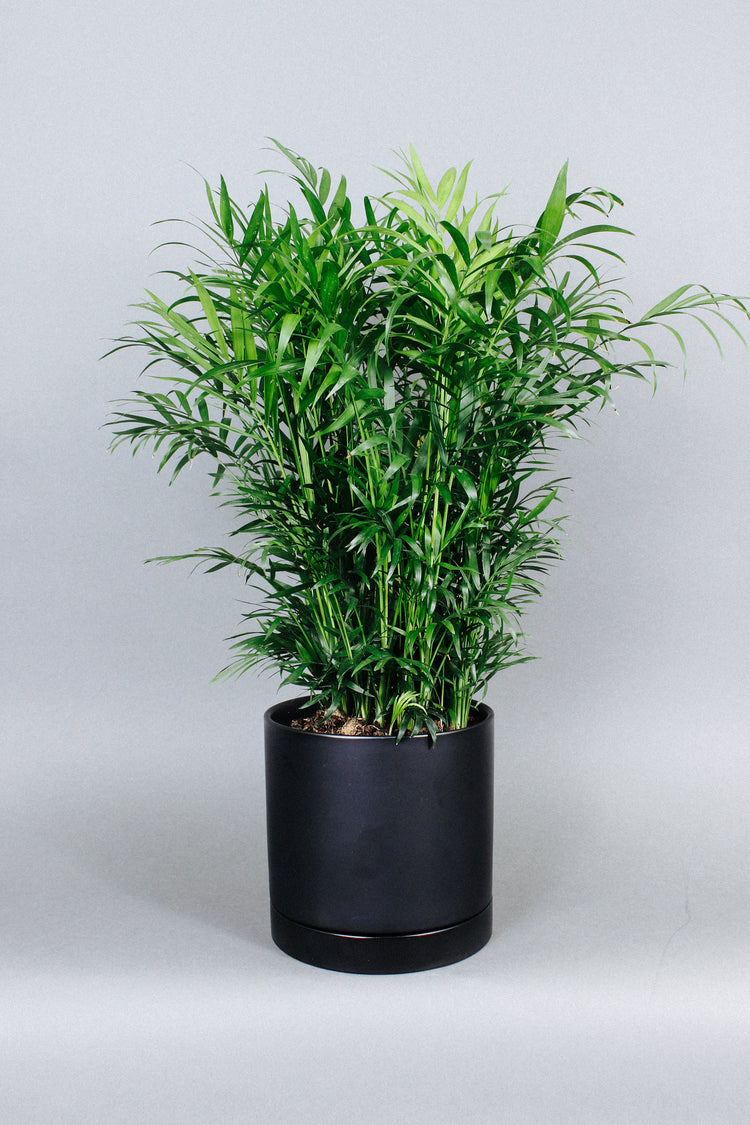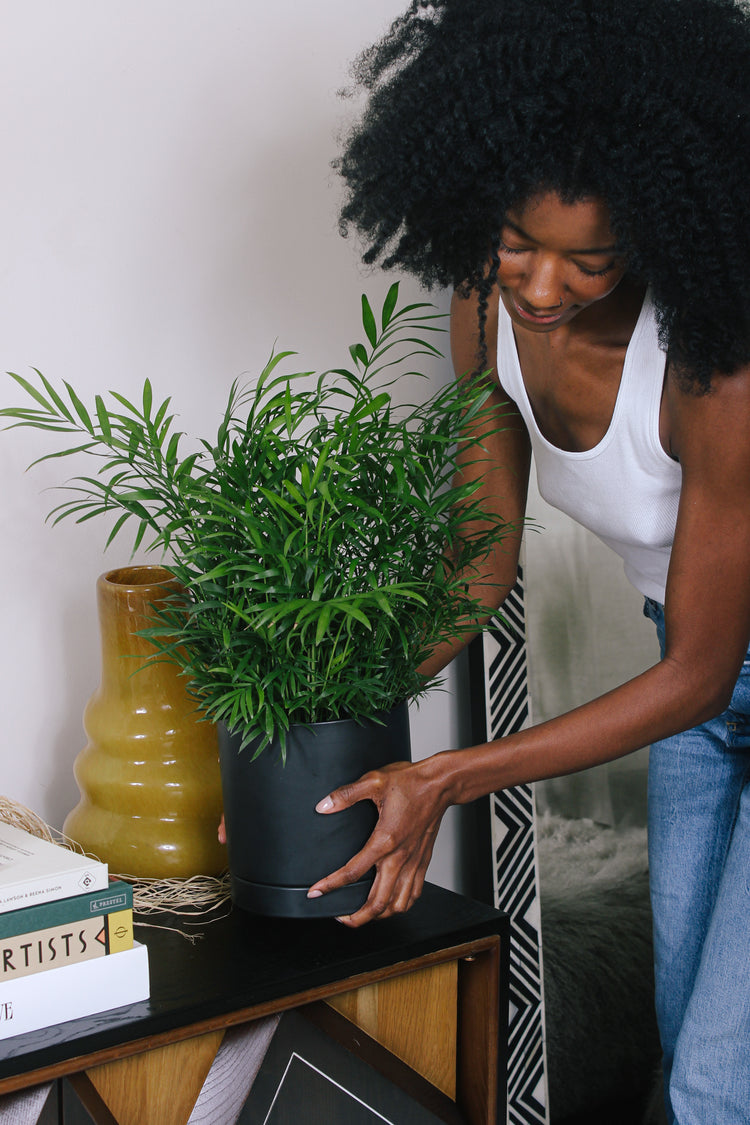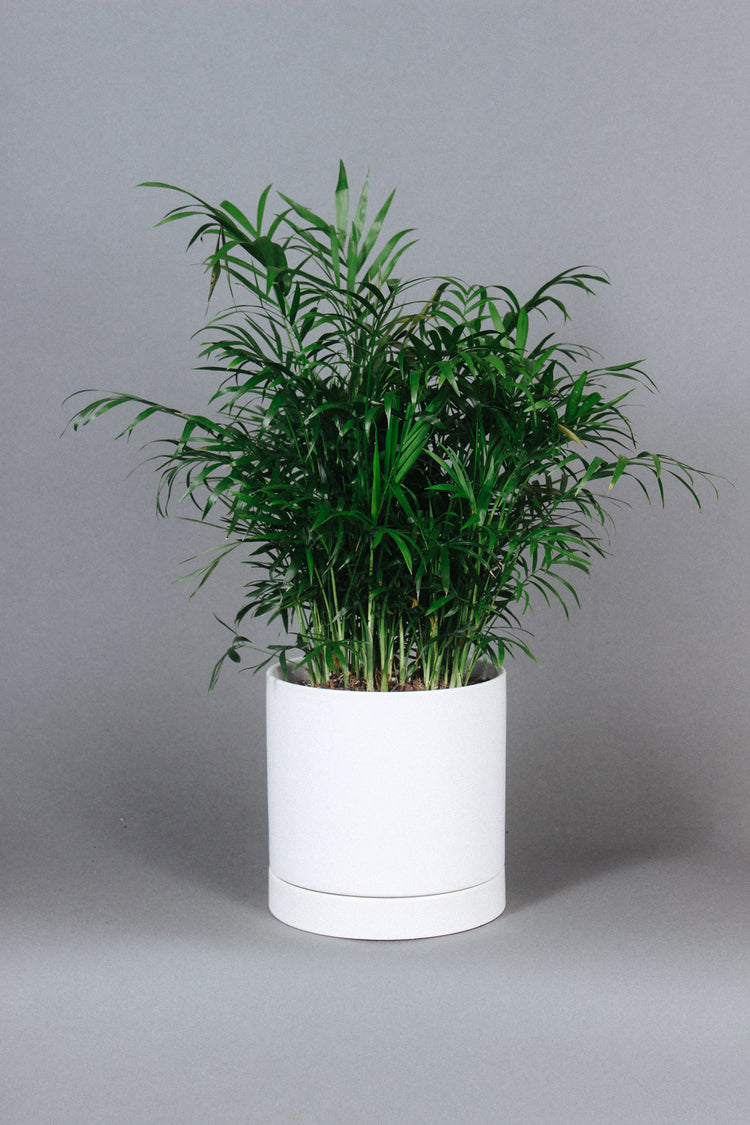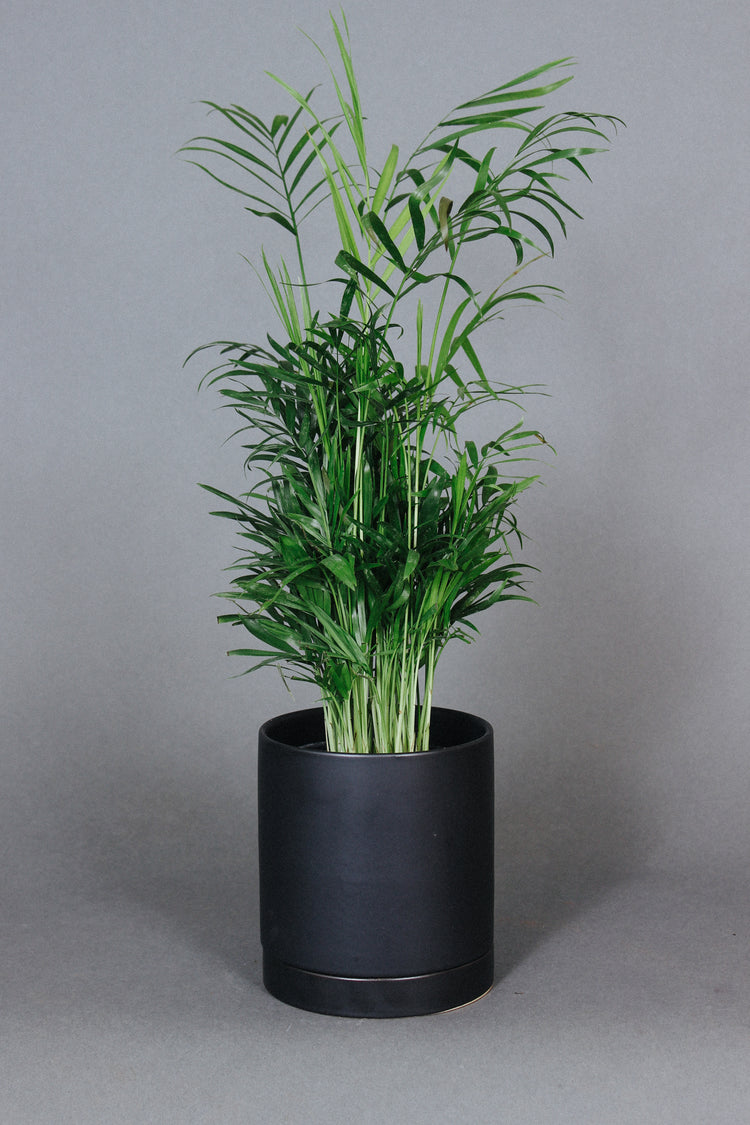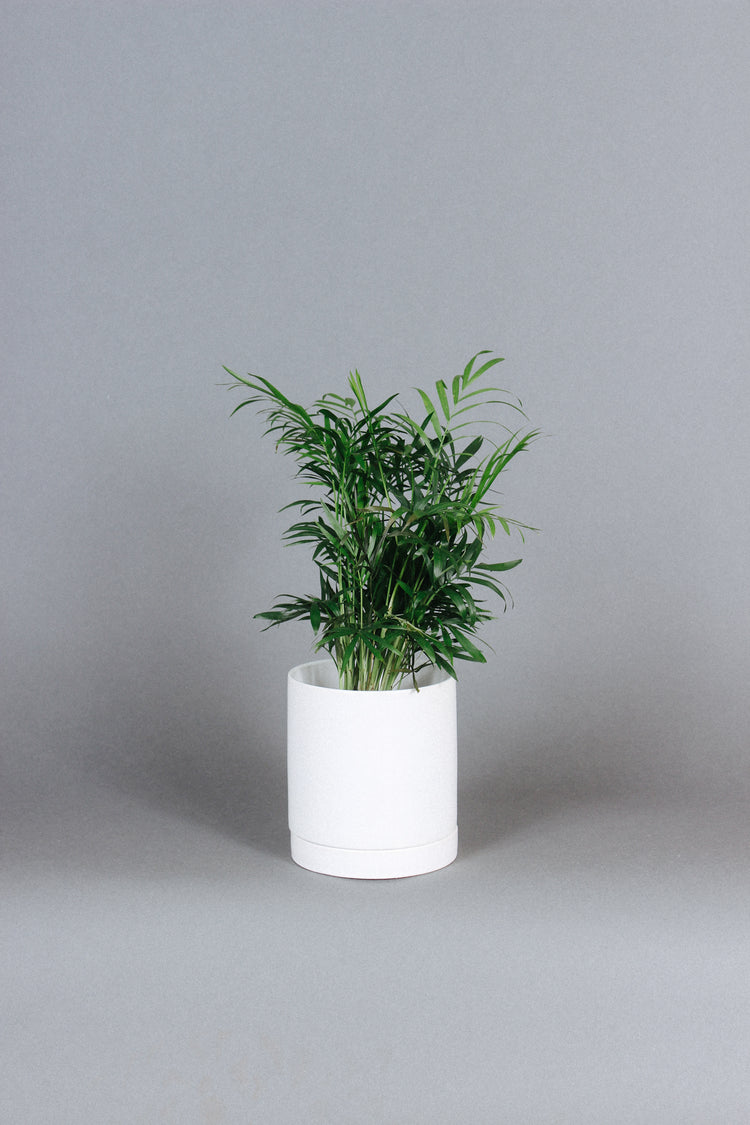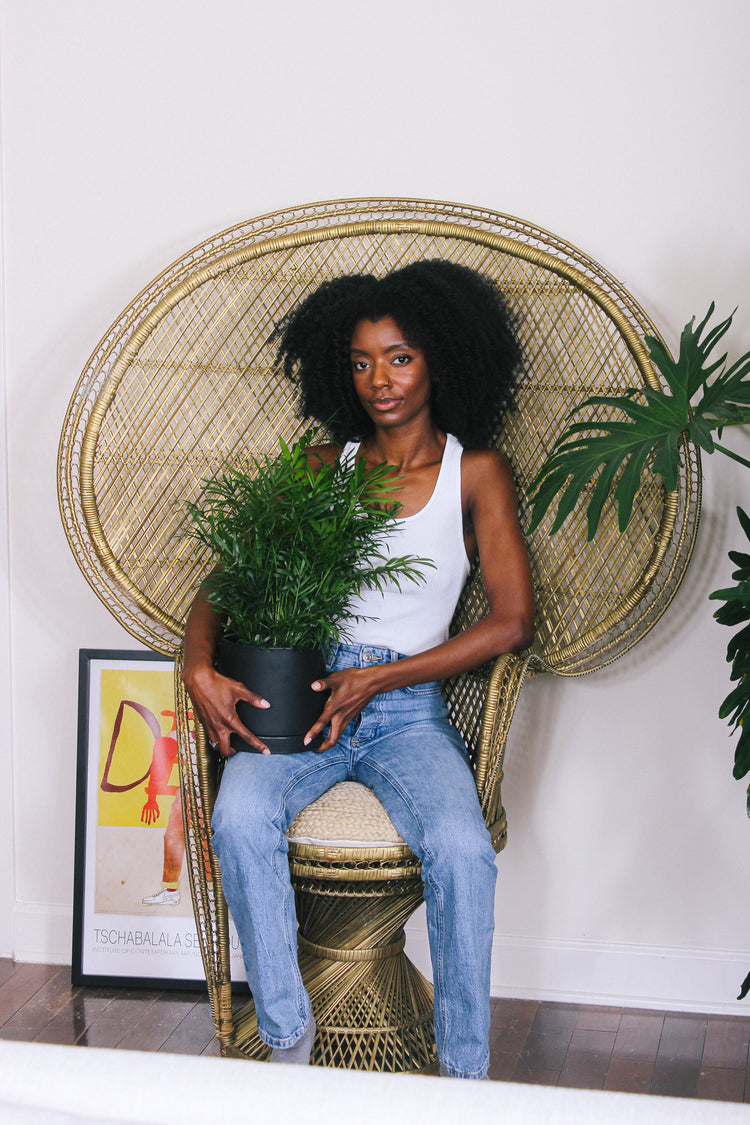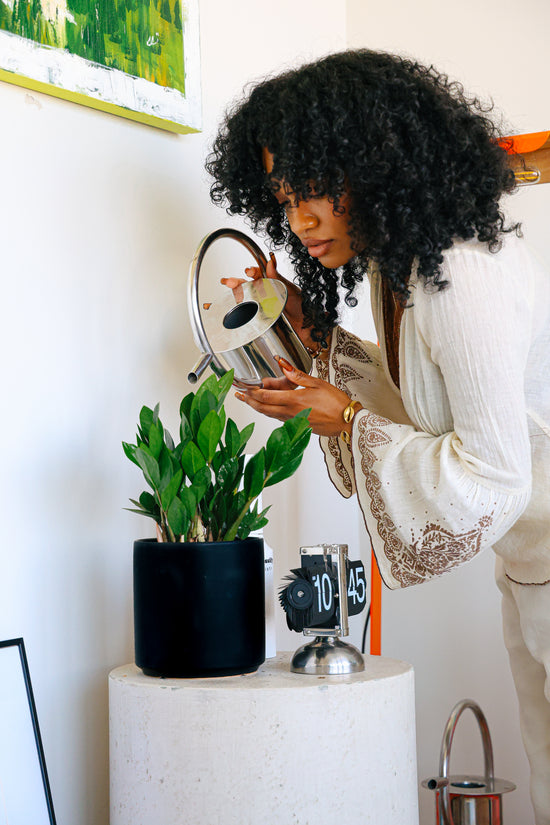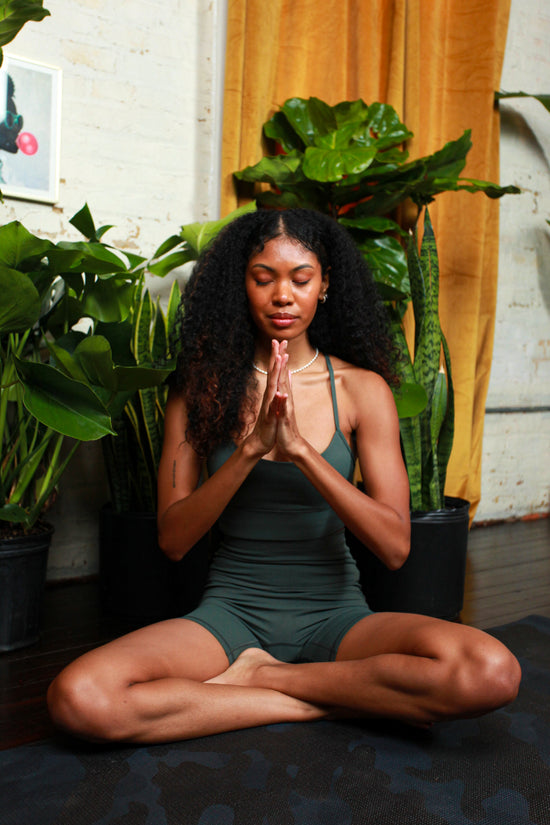Native to tropical Mexico and Guatemala, Neanthe Bella Palms are easy palms to care for. Being both pet-friendly and petite, they are one of the most popular indoor houseplants today. With a few particularities, we’ve detailed all the care it will need in your home below.
CHARACTERISTICS
This species of palm grows low underneath the rainforest canopy. Their thin stems grow up in clusters, with fine, feather-like, green leaves flaring out on each branch. Indoors, these can grow up to 4 feet tall, making them compact and versatile for any space.
LIGHT
Neanthe Bella Palms will thrive in just about any light level that is indirect. However, they prefer medium to bright, indirect light. Light filtered through sheer curtains or a few away from a window is ideal. Rooms with east and south-facing windows will offer plenty of bright light, however, these palms should never be in direct sunlight.
WATER
These tropical plants prefer their soil slightly moist with a brief dry period in between each watering. Once the top 3 inches of soil have dried, water well enough that it flows out of the drainage hole. They’ll enjoy deep showers or bottom watering on occasion and will not do well under drought. Reduce frequency during the fall and winter.
AIR
Neanthes require high humidity and warm air between 65º-80º. They won’t do well if placed near drafts, cold windows, or sources of heat. To create a comfortable, tropical environment for your palm, you can:
- Add a humidifier nearby
- Create a pebble tray that lives underneath the pot
- Place in a bathroom or kitchen, if lighting is suitable
- Mist the leaves 2-4x per week with non-tap water
PLACEMENT
In some cultures, palms are believed to represent good luck. They’re also a symbol of safety, reunions, and peace of mind. Feng Shui practices believe the North-west corner of our homes harnesses this intentional energy. If the lighting is suitable, this is a great spot for your Neanthe Palm.
Due to its petite size, it’s also a lovely tabletop statement piece and is safe for floors, being that it’s pet friendly!
POTTING & SOIL
A ceramic planter with a drainage hole provides ideal moisture balance for your Neanthe. Alternatively, any other sturdy planter with a drainage hole will do. When repotting, keep it in a planter of the same size or no more than 2 inches larger.
Ideal soil includes amendments that are both well-draining and moisture-retaining. Additions like perlite, coco coir, and sand will give the roots air to breathe while maintaining moisture that keeps palms happy.
SEASONAL CARE
Indoor air may require that there are seasonal adjustments to where your Neanthe is placed. A cold, drafty window and proximity to air vents are never ideal places for indoor plants. If placed at the interior of the room, consider moving it nearer to a window to access more daylight during the winter. Just be careful to avoid placing your Neanthe in direct sunlight.
Fall and winter are seasons that plants go into rest and will require less water and no fertilizer. Less daylight and cooler temps will also dry the soil at a slower rate. Assess the soil’s moisture by sticking your finger in and refrain from watering until the top 2-3 inches of soil have dried.
PRUNING & PROPAGATION
Neanthe Palms can’t be pruned to encourage or control growth the way many other plants can. Pruning back healthy parts of the plant will actually cause harm that could cause the plant to stop growing. However, when lower, old leaves have browned and died off, the entire stem can be pinched or snipped from the plant.
Neanthe Palms can be carefully propagated by division at the roots. Once it has matured with plenty of stems, examine the root systems during a scheduled repotting session. Look for a natural separation to divide the roots into two (a clean, sharp knife may be necessary). Sprinkle the affected roots with cinnamon to prevent infection and pot them in separate planters. Expect them to show signs of shock and require some time + TLC to recover.
COMMON ISSUES
Most issues with the Neanthe Palm are due to improper water or light. If you’re seeing cosmetic changes, troubleshoot some common causes below:
BROWN, DRY LEAVES
Brown + dry leaves on your Neanthe are a sign that direct light is scorching the leaves or that the air is dry and needs more humidity. Brown leaves may also occur on a palm that is severely underwatered or experiencing cold.
YELLOW LEAVES
Yellow leaves can appear on a Neanthe Palm if it is overwatered or underwatered. Some leaves scorched by direct light may also appear yellow. Other causes of yellow leaves include nutrient deficiencies and old leaves making room for new growth.
DROOPING
These palms will generally droop in response to environmental changes such as temperature and insufficient lighting. Drooping is also a sign of shock, pests, and improper lighting. If no recent changes have been made, stick your finger into the soil to assess its thirst level. Rule out pests by reading our blog here.
PESTS + FUNGUS
Neanthe Palms are vulnerable to pests such as spider mites when the air is very dry or when under stress. Fungus gnats and root rot, on the other hand, are common when the soil has been overwatered. Read more here. These infestations can cause any of the aforementioned symptoms as well.
PRO TIPS
You’ll be an expert in Neanthe Palms in no time! Some pro tips we can offer are:
- While these can do well under low light, rooms that are too dim will cause slow growth or even harm to a Neanthe.
- Use caution when pruning a Neanthe Palm! Pruning any healthy green flesh can cause severe damage. Remove damaged, old, or dead sections of the plant only.




